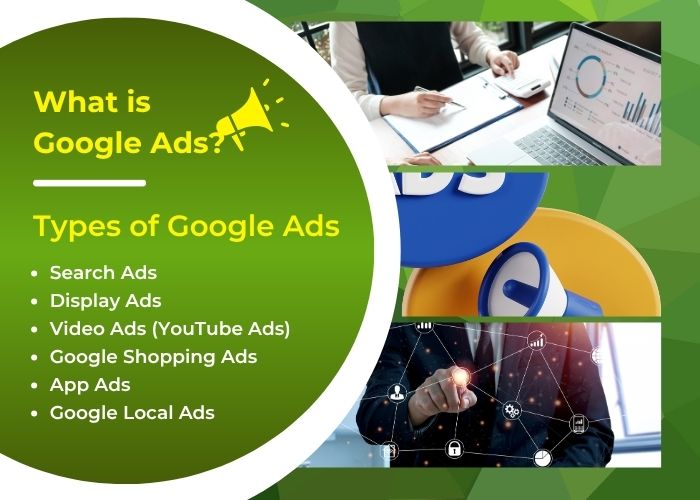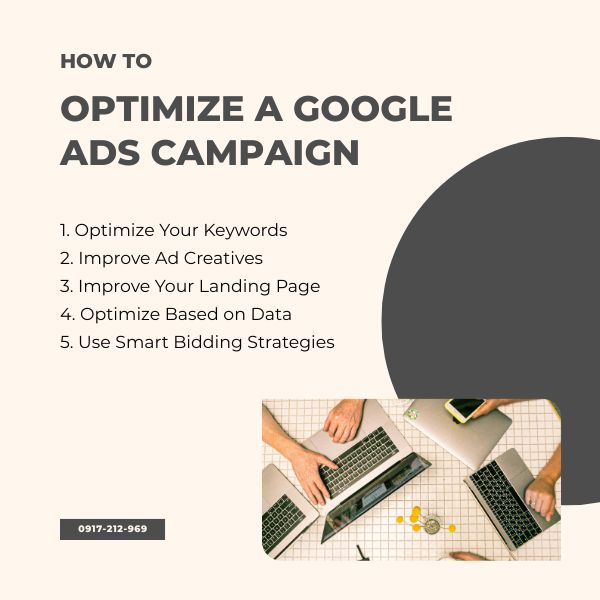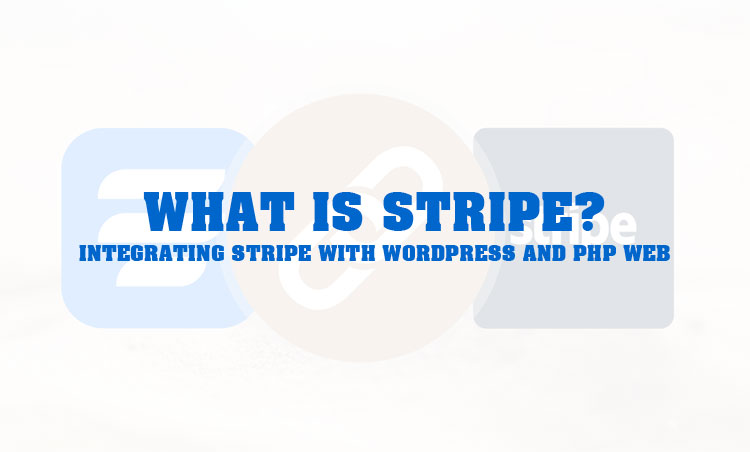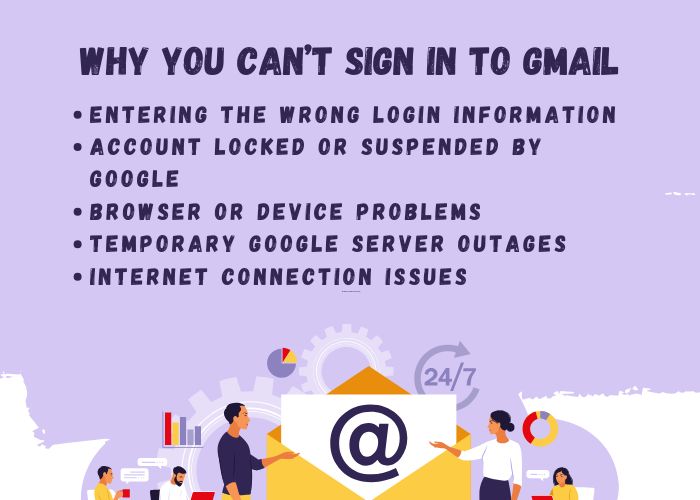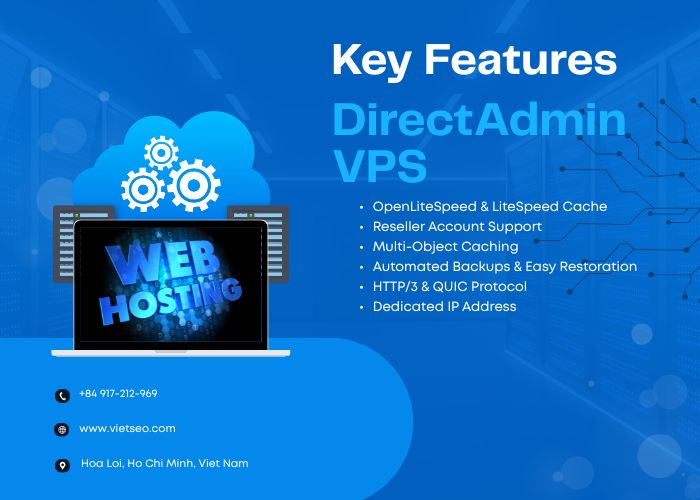How to Create a Google Ads Campaign for Beginners (Step-by-Step Guide)
What is Google Ads?
Google Ads (formerly Google AdWords) is Google’s official online advertising platform that enables businesses to promote their products and services across multiple channels — including Google Search, YouTube, Gmail, and millions of partner websites through the Google Display Network (GDN).
In simple terms, Google Ads allows you to place your message right in front of potential customers at the exact moment they’re searching for something related to your business. For example, when someone types “buy running shoes” into Google, your ad can appear at the top of the search results, making it much more likely that they’ll click and make a purchase.
This precise targeting helps businesses of all sizes — from local stores to global brands — attract the right audience, drive traffic, and increase sales. Beyond visibility, Google Ads provides detailed performance data so you can track results, control costs, and continuously optimize your campaigns to achieve the best possible return on investment (ROI).
Types of Google Ads
Google Ads offers several different ad formats to help businesses reach their ideal audience in the most effective way possible. Each type serves a unique purpose and works best for specific goals — whether you want to generate sales, build brand awareness, or attract local customers. Below are the main types of Google Ads you can use:
1. Search Ads
Search Ads are the most common and straightforward type of Google advertising. These text-based ads appear at the top or bottom of Google’s search results page whenever someone searches for keywords related to your product or service.
Example: If someone searches for “best digital marketing agency,” your ad can appear above the organic results, giving your business prime visibility.
Advantages:
- Reach users who already have clear buying intent.
- Easy to measure and track performance.
- Suitable for businesses of any size or budget.
2. Display Ads
Display Ads use visually appealing banner images or interactive elements that appear across millions of websites and apps within the Google Display Network (GDN).
These ads are great for catching users’ attention while they’re browsing online, watching videos, or reading news — even if they’re not actively searching for your product yet.
Advantages:
- Significantly boost brand awareness and recall.
- Advanced targeting by demographics, interests, and user behavior.
- Great for remarketing to users who have visited your website before.
3. Video Ads (YouTube Ads)
Video Ads appear on YouTube and other video partner platforms in formats such as skippable, non-skippable, or bumper ads.
They’re an excellent way to tell your brand story, demonstrate products, or emotionally connect with your audience through visuals and sound.
Advantages:
- Highly engaging and memorable format.
- Dramatically increases brand awareness and trust.
- Reaches billions of active YouTube users across all devices.
4. Google Shopping Ads
Designed specifically for e-commerce businesses, Shopping Ads display product photos, prices, store names, and short descriptions directly in the search results.
These ads help users instantly compare options and make quick buying decisions — making them one of the most conversion-focused ad formats.
Advantages:
- Showcase your products visually right in Google Search.
- Attract high-intent buyers ready to purchase.
- Help users compare prices and brands at a glance.
5. App Ads
App Ads promote your mobile application across Google’s properties — including Search, YouTube, Google Play, and the Display Network.
Google automatically generates and optimizes these ads using your app’s assets (like text, images, and videos) to drive maximum installs and engagement.
Advantages:
- Automated optimization across multiple platforms.
- Targets users most likely to download or engage with your app.
- Simplifies campaign management — minimal setup required.
6. Google Local Ads (Local Services Ads / Google Maps Ads)
Google Local Ads are ideal for local businesses that want to appear when nearby customers search for services — especially on Google Maps or with location-based queries like “coffee shop near me” or “plumber in District 1.”
Where they appear:
- At the top of Google Search results with an interactive map.
- Inside the Google Maps app, at the top of the local business listings.
Key features:
- Targets users within a specific geographic area.
- Displays essential business details: name, reviews, working hours, directions, and contact options.
- Includes “Call” or “Message” buttons directly on Maps for immediate engagement.
Advantages:
- Reach nearby customers with real-time needs.
- Increase walk-ins, phone calls, or online inquiries.
- No website required — only a verified Google Business Profile (formerly Google My Business).
Each type of Google Ad serves a different marketing goal, but together, they form a powerful toolkit that can help any business — from startups to established brands — grow visibility, attract leads, and drive measurable results.
How to Create a Google Ads Account
Setting up a Google Ads account is quick and straightforward. Follow these simple steps to start running your first campaign:
Step 1: Visit the Google Ads Website
Go to https://ads.google.com and click “Get started.”
You’ll be guided through the setup process directly from Google’s official advertising platform.
Step 2: Sign in with Your Google Account
To create a Google Ads account, you’ll need a Gmail account.
If you already use Gmail or other Google services (like YouTube or Google Drive), you can sign in with that account.
Otherwise, create a new Gmail account before continuing.
Step 3: Set Up Your New Google Ads Account
After signing in, Google will walk you through creating your first campaign as part of the setup.
If you prefer more control over your campaign settings — including keyword targeting, bidding strategy, and ad formats — click “Switch to Expert Mode.”
This mode unlocks the full Google Ads dashboard, ideal for businesses or marketers who want advanced customization.
Step 4: Choose Your Campaign Goal
Next, Google will ask what you want to achieve with your ads. Common goals include:
- Increase website traffic – Drive more visitors to your site.
- Get more phone calls – Encourage customers to call your business directly.
- Increase app downloads – Promote your mobile app on Google Play and the App Store.
- Improve brand awareness – Show your ads to as many relevant users as possible.
Select the goal that best matches your business objectives. This helps Google tailor campaign recommendations, bidding options, and ad placements to achieve your desired outcome more efficiently.
Once your goal is set, you’re ready to move on to the next step — adding funds and launching your first campaign.
How to Create a Basic Google Ads Campaign
Once your account is ready, it’s time to create your first campaign. Setting up a Google Ads campaign might seem complex at first, but when broken down step-by-step, it’s quite manageable. Here’s how to do it effectively:
Step 1: Choose a Campaign Type
The first thing you’ll need to decide is what type of campaign you want to run.
For beginners, it’s best to start with a Search Campaign — where your ads appear on Google’s search results page when people look for keywords related to your business.
Other types like Display, Video, or Shopping can be explored later as you gain more experience.
Step 2: Set a Goal
Google will ask you to select a specific advertising goal. Examples include:
- Drive website traffic
- Generate leads
- Increase sales
- Promote your brand or app
Choosing a clear goal helps Google optimize your campaign settings and bidding strategy to achieve that outcome.
Step 3: Set Up Your Campaign
Here’s where you define the key parameters that determine how and where your ads appear:
- Campaign name: Choose a clear and descriptive name (e.g., “Shoes Sale – Search Ads”).
- Networks: You can choose to show your ads on the Search Network only, or also include the Display Network for wider reach.
- Location targeting: Specify the countries, regions, or cities where your ads should appear.
- Language: Choose the language your customers use.
- Daily budget: Set how much you want to spend per day. Start small and scale up as you gather data.
- Bidding strategy: Decide how you’ll pay for clicks or conversions — for example, Maximize Clicks, Target CPA, or Manual CPC.
These settings give you control over your reach, costs, and ad performance.
Step 4: Create Ad Groups
Ad groups organize your ads around specific themes or keyword sets.
For each ad group:
- Choose keywords that closely match what your customers might search for.
- Use tools like Google Keyword Planner to discover high-performing keyword ideas and search volumes.
Each ad group should focus on a single product or topic to keep your messaging clear and relevant.
Step 5: Write Your Ad Copy
Your ad copy is what users actually see — it’s your chance to grab attention and convince them to click.
A standard search ad includes:
- Headline 1
- Headline 2
- Headline 3 (optional)
- Description (up to 90 characters)
- Display URL (the visible link)
- Final URL (the actual landing page link)
Tips for writing great ads:
- Include your main keyword in the headlines and description.
- Be clear, concise, and persuasive — focus on your unique value.
- Add a strong call to action (CTA) like “Buy now,” “Get a quote,” or “Sign up today.”
- Highlight benefits or special offers (e.g., free shipping, 20% off, 24/7 support).
Step 6: Review and Publish Your Campaign
Before launching, double-check all your settings — especially your budget, targeting, and URLs — to ensure everything is correct.
Once you’re satisfied, click “Publish” to make your campaign live.
From here, Google will begin reviewing your ads, and once approved, they’ll start appearing to your target audience.
Launching your first Google Ads campaign is just the beginning. The real success comes from continuous optimization — adjusting your keywords, improving your ad copy, and refining your targeting based on real performance data.
How to Optimize a Google Ads Campaign
Creating a Google Ads campaign is just the beginning — real success comes from continuous optimization. By refining your keywords, improving ad creatives, and analyzing performance data, you can significantly boost your campaign’s ROI and reduce wasted spend. Here’s how to optimize effectively.
1. Optimize Your Keywords
Keywords are the foundation of your campaign’s performance. Regularly review and refine them to ensure you’re reaching the right audience.
Best practices:
- Add negative keywords to block irrelevant searches and prevent wasted clicks.
- Use the Search Terms Report to find new keyword ideas that are actually driving results.
- Pause or remove keywords with low click-through rates (CTR) or poor conversion performance.
- Focus on high-intent keywords that reflect strong purchase intent (e.g., “buy,” “order,” “service near me”).
By keeping your keyword list clean and relevant, you improve both ad quality and cost efficiency.
2. Improve Ad Creatives
Your ad copy plays a major role in attracting attention and encouraging clicks. Even small changes can lead to big differences in results.
Optimization tips:
- Test multiple versions (A/B testing) to find out which headlines and descriptions perform best.
- Refresh your ads regularly to align with seasonal campaigns, promotions, or changes in user behavior.
- Use ad extensions such as:
- Sitelinks: Add extra links to specific pages on your site.
- Callouts: Highlight offers or key benefits (e.g., “Free Delivery,” “24/7 Support”).
- Structured snippets: Showcase categories like “Services,” “Brands,” or “Types.”
Ad extensions make your ads more noticeable and can significantly improve your CTR.
3. Improve Your Landing Page
Even the best ads won’t convert if your landing page isn’t optimized. The landing page should deliver exactly what your ad promises — quickly and clearly.
Key factors:
- Fast loading speed: A slow page leads to high bounce rates. Use tools like PageSpeed Insights to test performance.
- Mobile-friendliness: Ensure your page looks and functions well on all devices.
- Consistent messaging: Match your ad text with the content on your landing page to maintain trust and relevance.
- Strong call-to-action (CTA): Use clear, visible buttons like “Get Quote,” “Buy Now,” or “Contact Us.”
A well-optimized landing page improves both user experience and Quality Score, reducing your cost per click (CPC).
4. Optimize Based on Data
Data is your best guide for making informed adjustments. Regularly track your performance and focus your budget on what works.
What to do:
- Monitor key metrics such as CTR, conversion rate, and cost per acquisition (CPA).
- Use Google Analytics and Google Tag Manager to understand user behavior after they click your ad.
- Increase budgets for high-performing ad groups or keywords.
- Pause or adjust those that underperform or drain your budget.
Consistent data analysis ensures you’re always improving — not guessing.
5. Use Smart Bidding Strategies
Google’s Smart Bidding uses machine learning to automatically set bids that help you reach your campaign goals more efficiently.
Popular smart bidding options:
- Maximize Conversions: Automatically adjusts bids to get the most conversions within your budget.
- Target CPA (Cost Per Acquisition): Focuses on getting conversions at your desired cost.
- Target ROAS (Return on Ad Spend): Ideal for e-commerce businesses aiming to maximize revenue for every dollar spent.
These automated strategies save time, reduce guesswork, and improve campaign performance over time.
By applying these optimization techniques consistently, you’ll not only improve your campaign’s visibility and conversion rates — but also ensure every dollar spent delivers measurable value.
How to Add Funds to Google Ads
Before your ads can start running, you need to set up billing and add funds to your Google Ads account. Fortunately, Google makes the payment process simple and flexible, allowing you to choose the method that best fits your business. Here’s how to do it:
Step 1: Go to the Billing Section
From the main Google Ads dashboard, click the tools icon (the wrench symbol) in the top navigation bar.
Then, under the “Billing” section, select “Billing & Payments.”
Here, you’ll be able to view your current balance, manage invoices, and set up your preferred payment options.
Step 2: Choose a Payment Method
Google supports a variety of secure payment methods depending on your country or region. The most common options include:
- International credit or debit cards: Visa, MasterCard, American Express
- Bank account transfers (wire or ACH): Available in certain regions
- E-wallets: Such as Momo, PayPal, or other local options, depending on your location
Google automatically detects which payment methods are available for your account based on your billing country.
Step 3: Set Your Budget and Payment Type
Next, decide how you want to pay for your ads. Google offers two main payment options:
- Automatic payments:
Google charges your payment method after your ads have run — either when you reach a specific billing threshold or 30 days after your last payment (whichever comes first).
This option is convenient for ongoing campaigns and helps maintain continuous ad delivery.
- Manual payments:
You add funds in advance, and Google gradually deducts ad costs from your prepaid balance as your ads run.
This is ideal if you want tighter control over spending or have a fixed campaign budget.
By setting up billing correctly and choosing the right payment option, you ensure your ads run smoothly without interruptions — keeping your campaigns active and your audience continuously engaged.
Important Notes When Running Google Ads
Running a Google Ads campaign effectively requires more than just setting it up — you also need to follow Google’s policies and maintain consistent monitoring to ensure long-term success. Here are some key points to keep in mind:
1. Follow Google Ads Policies Strictly
Google has clear rules regarding what can and cannot be advertised. Violating these policies can lead to your ads being disapproved — or worse, your account being suspended.
Examples of violations include:
- Promoting prohibited products or services (e.g., counterfeit goods, illegal substances).
- Using misleading or deceptive content, such as false claims or clickbait.
- Violating rules around data collection, privacy, or trademark use.
Always review the latest Google Ads Policy Center to ensure your ads stay compliant.
2. Monitor Campaigns Closely — Especially in the First 1–2 Weeks
The first two weeks of a new campaign are crucial. During this time, you’re gathering data and testing how your ads perform.
Tips:
- Check your campaign daily to track impressions, clicks, and conversions.
- Adjust bids, keywords, or targeting if performance isn’t meeting expectations.
- Identify underperforming ads early and replace them with better variations.
Consistent monitoring helps you react quickly and prevent wasted spend.
3. Keep an Eye on Keyword Quality Score
Google assigns a Quality Score (from 1 to 10) to each keyword based on its relevance, click-through rate, and landing page experience.
A higher Quality Score means:
- Lower cost per click (CPC)
- Better ad positioning
- Improved return on investment (ROI)
Tip: Focus on writing relevant ad copy and creating high-quality landing pages that directly match your keywords to improve your Quality Score over time.
By following these best practices — complying with policies, monitoring regularly, and maintaining keyword quality — you’ll build sustainable, cost-effective Google Ads campaigns that deliver real business results.
Conclusion
Google Ads is one of the most powerful digital marketing tools available — but success doesn’t come from simply turning it on. It comes from understanding how to use it strategically and optimizing every step along the way.
To run a truly effective campaign, you need to:
- Understand your product or service inside out.
- Identify your target audience and their search intent.
- Craft compelling ad copy that captures attention and motivates action.
- Design high-converting landing pages that deliver on your ad’s promise.
Equally important, you must track your data regularly and fine-tune your strategy based on performance. The best Google Ads campaigns are built on continuous testing, learning, and improvement.
Don’t hesitate to experiment — digital advertising is a journey of iteration and discovery. If you’re new to Google Ads, begin with a modest budget, observe the results, and scale up gradually as you gain confidence and insights. Over time, these small, data-driven optimizations can lead to big returns and sustainable business growth.
